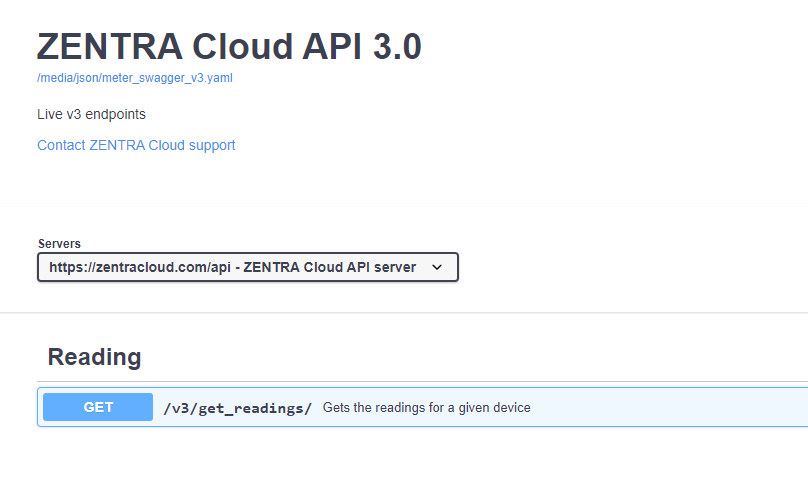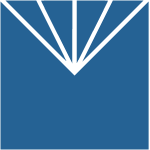Table of Contents
EU Server API
Documentation for the ZENTRA Cloud API.

This article details where and how to use the documentation for the EU server API.
EU Server
Swagger https://zentracloud.eu/api/v4/documentation/
v4 of the ZENTRA Cloud API is now available for production. METER recommends new clients start with v4. Existing clients can switch to using v4 if they encounter issues with pagination in v3. Both v3 and v4 support queries for ATMOS 41W, ZL6, EM60G and EM50G devices. The documentation for v3 and v4 is the same, users can simply change the version number in the endpoint URL from "v3" to "v4".
Users are limited to a total of 60 calls per minute(60sec), and each device is limited to 1 call per minute(60sec). One user can make 60 calls to 60 different devices in a 60 second period.
To set the units, log in to your account at zentracloud.com and click the wrench icon from the main menu, and select Measurement Units. Edit your preferred units and click Accept. See the Setting your preferred measurement units article here.
How to start
- Sign up at www.zentracloud.eu if you haven't got your ZENTRA API key yet.
- Select API from the main menu.
- On the Keys tab click Copy token.

Run a test
- Navigate to the API v4 Swagger documentation.
- Select Authorize.
- Paste your token ID.
- Click Authorize.

GET
- To view an example, press the GET readings button.

Parameters
Experiment with different start_date, end_date, or start_mrid and end_mrid query parameters. Only start_date and end_date or start_mrid and end_mrid parameters need to be defined in the request, not both. MRID stands for "Measurement Record ID" and increases as the number of records on the device increases.
device_sn string (query) | The serial number of the device having data requested. |
start_date string ($date) (query) | Start date of time range. Defaults to date of first reading of device. Overrides start_mrid. |
end_date string ($date) (query) | End date of time range. Defaults to date of last reading of device. Overrides end_mrid. |
start_mrid integer (query) | Start mrid of mrid range. Defaults to mrid of first reading from Device. |
end_mrid integer (query) | End mrid of mrid range. Defaults to mrid of last reading from Device. |
output_format string (query) | The data structure of the response content. Defaults to json. Other options include pandas dataframe and csv. |
page_num integer (query) | Page number. Defaults to 1. |
per_page integer (query) | Number of readings per page. Defaults to 500. Max is 2000. |
device_depth boolean (query) | When set to true, the API will return the sensor depth as part of the device metadata payload. |
location boolean (query) | When set to true, the API will return the logger location history(lat/lon) |
sort_by string (query) | Sort the readings in ascending or descending order. Defaults to descending. |
Examples
View examples in json, csv or pandas Dataframe.

Example Code Snippet
Copy the code snippet below, then edit the token tok, device serial number sn, and start and end dates start_date , end_date .
import requests # pip install requests
import pandas # pip install pandas
def get_with_credentials(tok, uri, **kwargs):
# just in case we forget to put "Token MyToken"
token = tok if tok.lower().startswith("token") else f"Token {tok}"
headers = {"Authorization": token}
return requests.get(uri, headers=headers, **kwargs)
def get_readings_response(sn, start_date, end_date, **extra_kwargs_for_endpoint):
server = extra_kwargs_for_endpoint.get("server", "https://zentracloud.com")
url = f"{server}/api/v4/get_readings/"
default_args = {
'output_format': "df",
'per_page': 1,
'page_num': 1,
'sort_by': 'desc',
'start_date': start_date,
'end_date': end_date
}
data = {**default_args, **extra_kwargs_for_endpoint, "device_sn": sn}
tok = extra_kwargs_for_endpoint.pop("token", "")
return get_with_credentials(tok, url, params=data)
def get_readings_dataframe(sn,start_date,end_date,**extra_kwargs_for_endpoint):
res = get_readings_response(sn,start_date,end_date,**extra_kwargs_for_endpoint)
if(res.ok):
data = res.json()
return pandas.DataFrame(**json.loads(data["data"]))
return res
#fill in your token, device serial number and start and end dates here.
tok = "Token <Your Token>"
sn="z6-#####"
start_date="2024-04-01 00:00:00"
end_date="2024-04-02 00:00:00"
#specify the server here.
server="https://zentracloud.eu"
df = get_readings_dataframe(sn, start_date, end_date, token=tok, server=server)
print(df)
Error Flags
Each measurement reading includes an error_flag field that indicates whether the value is suspect or invalid due to sensor or data issues.
error_flag: true- The measurement is suspect or bad. Users should treat the value as unreliable or ignore it.error_flag: false- The measurement is considered valid.
If the error_flag is true, additional context may be provided in the error_description field, and detailed error types can be found in the metadata.errors array.
Example
"Wind Speed": [
{
"metadata": {
"device_sn": "A4100000",
"device_name": "A4100000",
"port_number": 1,
"sensor_sn": "A4100000",
"sensor_name": "ATMOS 41W",
"units": " mph",
"errors": [
"ORIENTATION_ERROR",
"CURATED_RAIN_DEGRADED"
]
},
"readings": [
{
"timestamp_utc": 1756386000,
"datetime": "2022-02-12 07:00:00-06:00",
"tz_offset": -21600,
"value": null,
"precision": 2,
"mrid": 1110,
"error_flag": true,
"error_description": "Sensor is reporting an error"
},
.....
In this example, the wind speed value is unavailable null, and the error_flag value is set to true. The metadata.errors array lists an ORIENTATION_ERROR which could be the cause of the null value if the instrument is not level.
Location History
When the Location parameter is set to true, the API will return the logger's latitude and longitude history.
Example
"location_history": [
{
"Latitude": 43.1122334,
"Longitude": -102.112233,
"Altitude": 654321.0,
"datetime": "2025-09-10 06:15:53.084519+00:00"
},
{
"Latitude": 30.1122334,
"Longitude": -101.112233,
"Altitude": 765432.0,
"datetime": "2024-09-10 06:00:36.632783+00:00"
},
{
"Latitude": 22.1122334,
"Longitude": -100.112233,
"Altitude": 876543.0,
"datetime": "2023-09-10 16:15:47.251351+00:00"
},
]
}
In this example, the device location history has three separate recorded locations.
How did we do?
US Server API
TAHMO Server API
